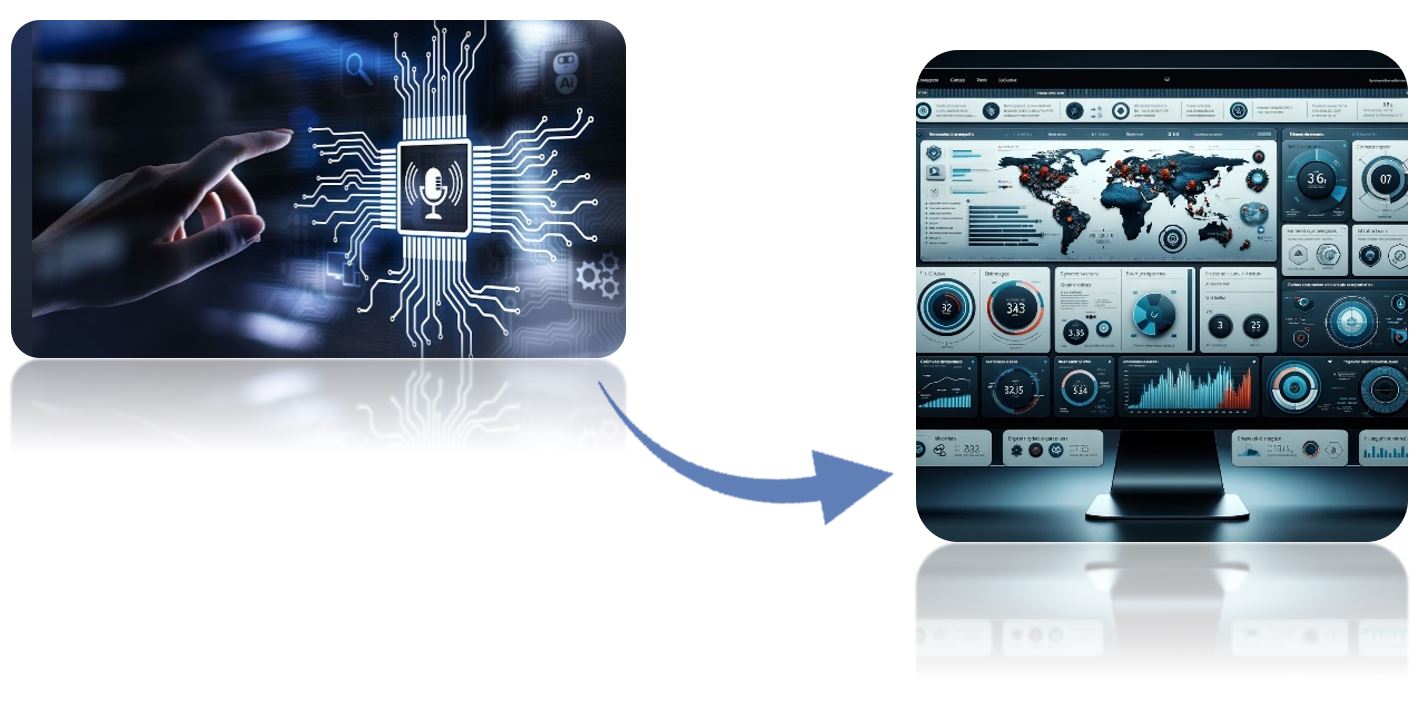Voice Activated SOC – Zero MTTR Is Possible
Voice Activation Is in Our Grasp – Everywhere
“Alexa – Open the living room shutters…”
“Hello Google – What is the best route to the office today?”
“Hey Siri, what was the score the last time the Green Bay Packers played the New York Giants?”
Those are just a fraction of our day-to-day usage with voice activation we use with our smart home assistants and smartphones. Combining those with rules, routines, and scenes, opens a world of advanced capabilities and automations which will make us feel like we are part of a futuristic Hollywood movie.
Voice activation usage has been on a steady upward trend over the past decade, driven primarily by advancements in voice recognition and linguistic analysis technologies, the proliferation of smart devices, and the increasing demand for hands-free and intuitive user interfaces, got us where we are today – Using our voice, in a natural, simple language to do simple or complicated actions, and consume data in an accurate and fast way, in some cases even removing the need of a UI.
Voice Activation is all around us. Here are a few examples:
Smart Speakers and Virtual Assistants: The widespread adoption of smart speakers like Amazon Echo with Alexa, Google Home with Google Assistant, and Apple HomePod with Siri has significantly contributed to the growth of voice activation usage. These devices serve as central hubs for controlling smart home devices, accessing information, and performing various tasks through voice commands.
Integration in Consumer Electronics: Voice activation capabilities are increasingly being integrated into various consumer electronics, including smartphones, TVs, cars, and appliances. Users can control these devices and access their functionalities using voice commands, enhancing convenience and user experience.
IoT and Smart Home Automation: The Internet of Things (IoT) ecosystem continues to expand, with voice activation playing a crucial role in connecting and controlling interconnected devices within smart homes. Users can voice-control lights, thermostats, security cameras, door locks, and other smart home devices, creating a more seamless and interconnected living environment.
Voice-Enabled Commerce: Voice commerce, also known as v-commerce, is gaining traction as more consumers use voice commands to search for products, place orders, and make purchases online. E-commerce platforms and retailers are integrating voice activation features into their apps and websites to fit this emerging trend.
Military Missions: US special forces examine voice activated drones to perform mission-level commands, actions like setting a route, area, and zone reconnaissance, searching between a point, orbiting a point, conducting different scan patterns within a given area and to add over 100 autonomous behaviors in the near future.
Now, let’s take it up a notch, as we speak – humanity is adopting self-driving cars, healthcare robots performing precise life-saving operations, machine learning (ML) algorithms and artificial intelligence (AI) diagnosing cancer probability by analyzing scans and pictures.
All of those and more can be supported by voice activation, processed by natural language processing (NLP) and AI while considering multiple sources of information, crossed with big data, and being translated into predictions and actions while maintaining minimal to non-false-positive actions.
Voice Activated SOC – A True Game Changer
Voice activation has not yet found its place in security operation centers (SOCs), but its adoption could make a genuine revolution in this field. This is not just about implementing another feature; it is about introducing a tool that could revolutionize how security analysts operate and significantly improve the performance of security operations within organizations.
The complexity involved in navigating and interacting with cybersecurity systems has long been a major challenge as the mean-time-to-resolve (MTTR) metric continuously looms over SOC directors and operators, determining the SOC performance and efficiency.
Introducing a method that allows security analysts to communicate with different security systems and data inputs through voice commands could be a significant change, streamlining processes and enhancing overall effectiveness.
Remember Tony Stark & Jarvis analyzing a crime scene on Iron Man 3?

Well, that was back in 2013, we are in 2024 and an automated SOC, operated and assisted by voice activation is not a far fetch to achieve (with less effects).
So autonomous SOC is the key! To achieve it, and as a result reach minimal to zero MTTR the “next gen” SOC must rely on high volumes of data coming from several inputs like:
Alerts – Coming from DDoS mitigation services, routers, end-point users, IT infrastructure, etc.
Configurations & Logs – From security devices and end-point users to be able to modify and take corrective actions when required.
Analysts – Professional analyst that oversees the incident and provides inputs based on experience.
With this huge amount of data in hand, a predictive SOC needs to be taught and trained with best practices, playbooks, recommendations, flows, and routines. Those will be ready to be executed in the event of need to easily resolve a problem or mitigate an attack.

With the data being digested and analyzed, we can achieve particularly useful insights and inputs, just a few of those are:
- During peacetime:
- Get relevant insights and cross data outputs just by simply – Texting or asking by voice operation, all using natural language processing (NLP).
- Get useful predictive insights, on something that is about to happen, or an anomaly that is in its initial stages and might evolve to a real threat or a risk.
- Under Attack: An AI mechanism produce relevant and fast understanding of the incident and offer the optimal playbook which holds the remedy and the “to-do” list to resolve the incident. In some cases, it can even predict the attacker’s next step, issuing the relevant corrective actions in advance that will keep relevant assets safe in case the attack shapes, changes or escalates.

Summary
Being able to faster response incidents in the SOC and reducing the MTTR will dramatically change the way organizations manage security incidents.
Operating and handling security incidents using text and voice activation commands, will truly simplify the interaction and analysis of the huge amount of data involved in a security incident investigation, providing a better and faster mitigation and data analysis overview.
We are a glimpse away from a safer world…




